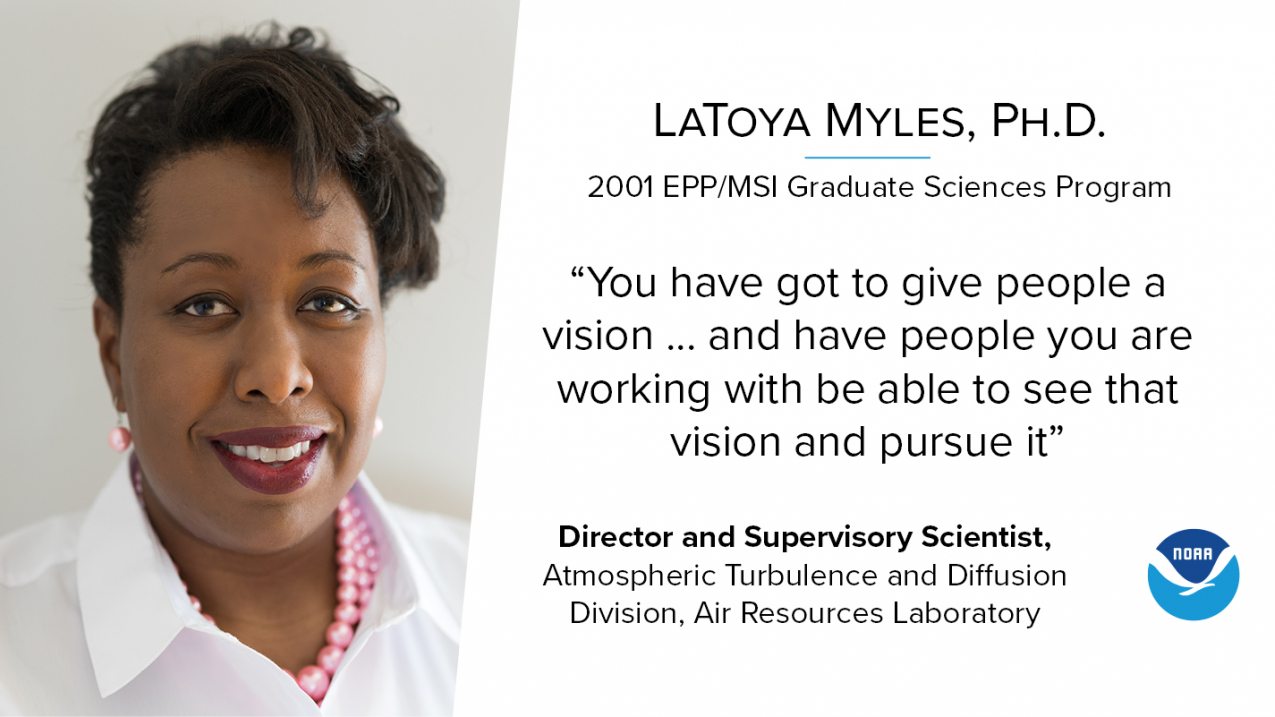LaToya Myles, Ph.D., is a leader, a scientist, a mentor, an Educational Partnership Program with Minority Serving Institutions (EPP/MSI) alumna, and a collector of quotes. One day, while relaxing with an episode of “Grey’s Anatomy,” a character said something that she jumped to add to her quote collection: “If you want someone to run a 4-minute mile, you don’t chase them, you don’t give them something to run from. You give them something to run to.” In just two sentences, this quote captured the essence of her leadership style.

A photo of LaToya Myles, Ph.D., a 2001 NOAA EPP/MSI Graduate Sciences Program Alumni next to her quote, which reads: "You have got to give people a vision ... and have people you are working with be able to see that vision and pursue it.” Myles is now the Director of the Atmospheric Turbulence and Diffusion Division of the Air Resources Laboratory. (Image credit: Graphic by Office of Education, photo courtesy of LaToya Myles.)



